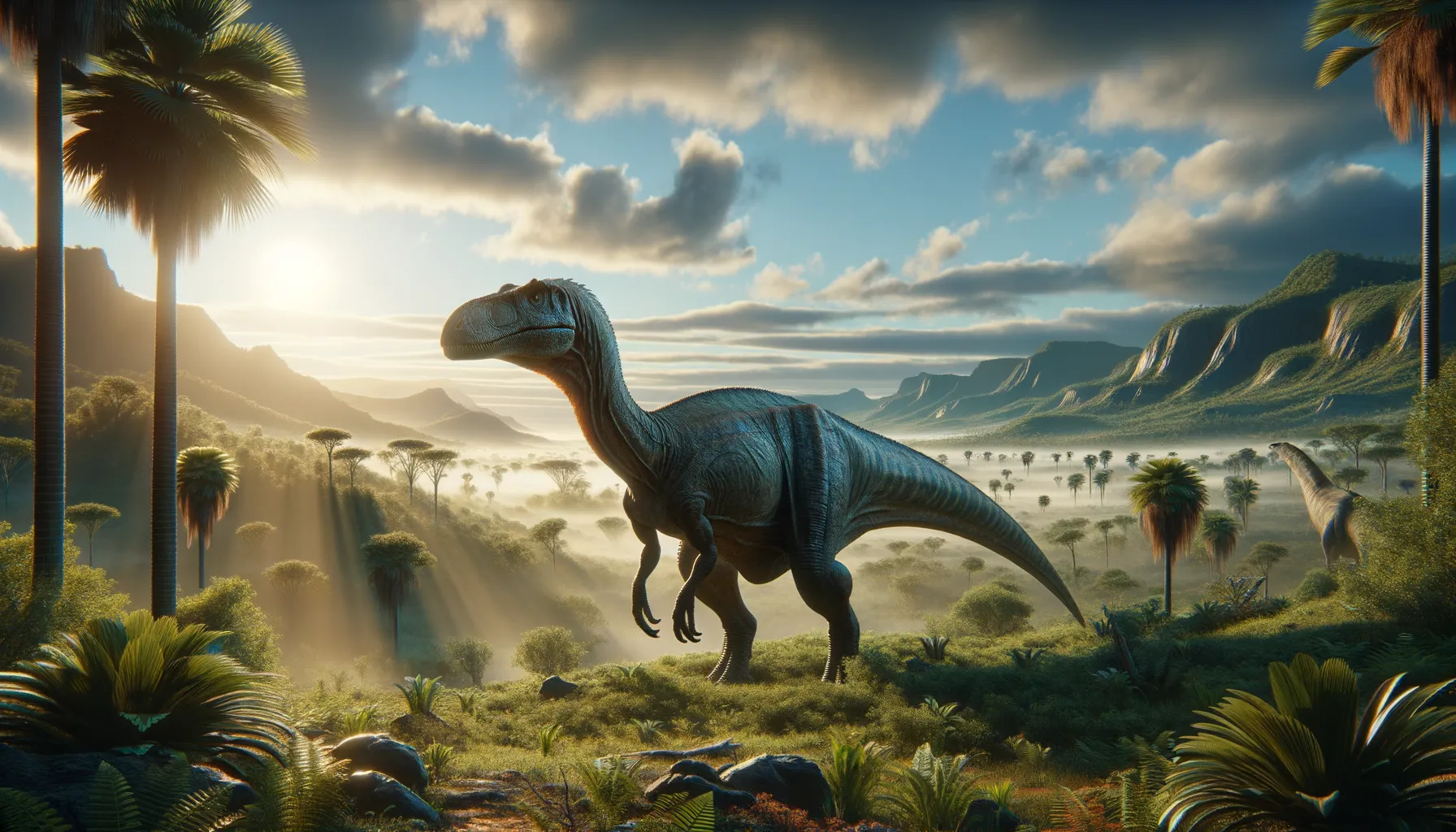
Anatotitan
The gentle giant of the Cretaceous age!
Period
Cretaceous
Length
About 30 to 40 feet long.
Height
Could reach up to 10 feet tall at the hips.
Weight
Estimated to weigh around 3 tons.
Anatotitan was a large herbivorous dinosaur known for its duck-billed appearance. It thrived during the late Cretaceous period, coexisting with other iconic dinosaurs. This dinosaur was part of the hadrosaurid family, distinguished by its flat, broad snout and ability to chew vegetation effectively. Anatotitan roamed what is now North America, using its strong limbs to support its massive body and graze the lush landscapes of the time.
Diet
Anatotitan was a herbivore, primarily consuming plants. Its broad, duck-billed snout was well-adapted for cropping leaves and vegetation. It likely fed on a variety of plant species available during its time.
Hunting
As a herbivore, Anatotitan did not hunt but instead foraged for plant material. Its primary focus was on consuming enough vegetation to sustain its large body.
Environmental challenges
Anatotitan faced environmental challenges such as predation from large carnivorous dinosaurs. It also had to adapt to potential changes in vegetation and climate during the late Cretaceous. Their survival relied on finding adequate food sources and avoiding natural disasters like floods.
Speed
Moderate, suitable for grazing and avoiding predators.
Lifespan
Possibly up to 30 years, typical for herbivorous dinosaurs.
First discovery
Discovered in Montana, USA, in the late 19th century.
Fun Facts
- Anatotitan was a giant duck-billed dinosaur that roamed North America during the Late Cretaceous period.
- It could grow up to 40 feet long, making it one of the largest dinosaurs in the hadrosaur family.
- The name 'Anatotitan' means 'giant duck', which refers to its broad duck-like beak.
- Anatotitan was a herbivore, feasting on plants and leaves in the lush environment.
- Its flat, broad snout was ideal for cropping vegetation, similar to how cows graze today.
- Anatotitan had hundreds of teeth arranged in rows and replaced continuously, perfect for grinding tough plant matter.
- Fossils of Anatotitan have primarily been found in the United States, especially in the Dakotas.
Growth and Development
Anatotitan likely experienced rapid growth during its early years to reach maturity quickly. Its development included growing a large, robust body to store energy and protect itself from predators. As a large herbivore, its lifespan may have been influenced by the availability of food and environmental conditions.
Habitat
Anatotitan inhabited floodplains and forested areas where vegetation was plentiful. These environments provided ample food resources while supporting a diverse range of life forms. Their habitats were shaped by occasional flooding, influencing the distribution of plant life they fed upon.
Interaction with other species
Anatotitan lived alongside other dinosaur species, including predators like Tyrannosaurus rex. It likely shared resources with other herbivorous species, contributing to the ecosystem's balance. Though primarily a peaceful grazer, it had to stay vigilant against potential predators.
Natural lifespan
Anatotitan likely had a lifespan of up to 30 years.
Reproduction
Anatotitan likely reproduced by laying eggs in nests constructed on the ground. Clutch sizes may have varied, with parental care playing a role in protecting the eggs from predators. Hatchlings would grow rapidly, relying on their herd for protection and social learning.
Social behaviour
Anatotitan is thought to have lived in groups or herds, providing protection against predators. Social structures may have involved hierarchy and cooperation in foraging efforts. Group living supported their survival in the dynamic environments of the Cretaceous.
Fossil locations
Fossils of Anatotitan have been primarily found in North America, particularly in regions like Montana and South Dakota. These fossils provide valuable insights into its structure and lifestyle. Its remains contribute to our understanding of hadrosaurid diversity during the late Cretaceous.
